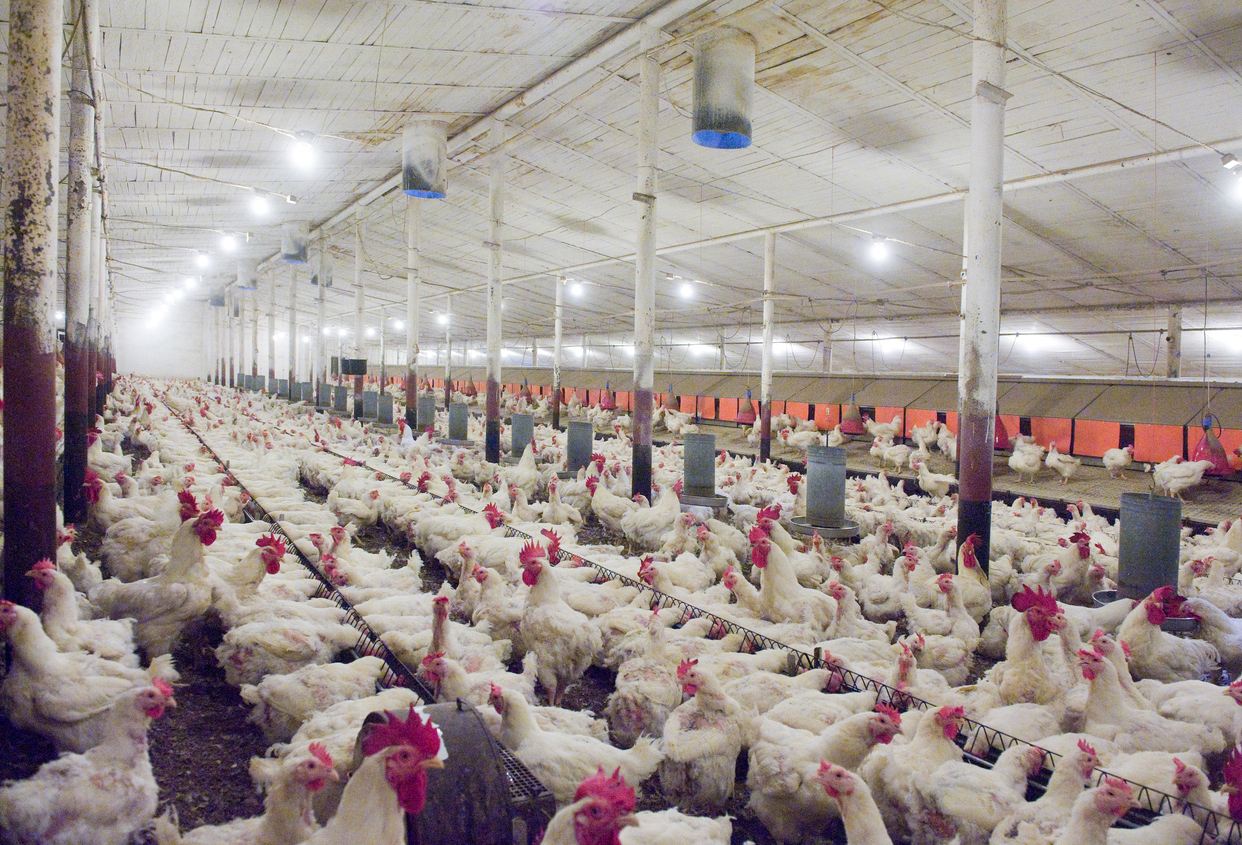Acceptable living standards for meat chickens in New Zealand have been called into question following the emergence of a graphic video earlier this week.
The animal welfare group that released the video is calling for the company to be prosecuted over its treatment of chickens at the farm. Ministry for Primary Industries (MPI) staff visited the Helensville farm on Friday and is reviewing the footage.
The SMC approached experts with questions about animal welfare standards for meat chickens in New Zealand — feel free to use these comments in your reporting.
Associate Professor Ngaio Beausoleil, Co-Director, Animal Welfare Science and Bioethics Centre, School of Veterinary Science, Massey University comments:
How are the animal welfare regulations for meat chickens in NZ derived?
“There are currently no ‘regulations’ (i.e. directly enforceable regulations that can result in direct penalties under the Animal Welfare Act) relating to stocking density or other aspects of husbandry for meat chickens.
“There are only Minimum Standards outlined in the 2012 Code of Welfare (Meat Chickens). ‘Minimum Standards’ and ‘Recommended Best Practices’ outlined in Codes of Welfare are developed to reflect good practice and scientific knowledge.
“They can be modified over time as community expectations, scientific knowledge and technical advances allow.”
What are the consequences when an organisation is found to be in breach of minimum standards?
“Minimum Standards outlined in the Codes of Welfare are not directly enforceable. If a person in charge of an animal is charged with an offence under the Animal Welfare Act, evidence of failure to meet the Minimum Standards in the relevant Codes may be used to support a prosecution. A defence against such charges may include evidence that the person in charge of the animal(s) met or exceeded the Minimum Standards in the relevant Codes.”
How do the SPCA blue tick of farming welfare guidelines differ?
“The SPCA Blue Tick of Farming Welfare standards for meat chickens can be applied only to birds that have some access to outdoor range (i.e. free range birds) so cannot be achieved for fully-housed meat chickens.
“For birds with some access to outdoor range, there are a number of additional standards that have to be met, above and beyond meeting the minimum standards in the relevant Codes of Welfare.
“With regard to stocking density, the SPCA Blue Tick standard requires a lower maximum stocking density indoors than the minimum standard in the 2012 Code of Welfare (Meat Chickens) – 34kg/m2 vs. max 38kg liveweight/m2 floor space.
“There are various other additional requirements including the need to monitor pecking injuries daily and take corrective action.”
How do the conditions in the footage filmed by Direct Animal Action of one of Tegel’s chicken farms relate to the standards?
“Any ill, injured or severely lame birds identified during daily inspection should be treated or humanely destroyed immediately upon recognition, and dead or culled birds should be removed daily.
“To achieve this, stockpersons must have sufficient knowledge and experience to recognize ill or injured birds.
“Persons in charge of meat chickens must conduct daily inspections and take any corrective actions required to maintain appropriate environmental conditions (e.g. ventilation, temperature, litter quality) for the health of the birds.”
No conflict of interest.
Kerry Mulqueen, Veterinary Scientist, Poultry Industry Association of New Zealand, comments:
As a vet, what’s your general reaction to the footage filmed by Direct Animal Action?
“Within a commercial poultry shed of 30,000+ birds there will be mortality. The farmer on a daily or twice daily basis inspects the birds in the shed and removes these birds as they are found.
“Given the shed is part of a dynamic biological process then these issues do arise and only when the farmer finds them can they be dealt with and removed from the shed.
“The video emphasises birds that should be culled and removed [as well as] dead birds that should be removed.
“Timing of farmer inspection and timing of break-in may be a factor here in presence of these birds shown.
“As the farmer does not inspect the sheds overnight then during this time there can be mortalities and issues that occur—these should be dealt with and removed in the morning shed inspection.”
“The film is a mixture of videos showing two ages of birds in two different sheds. Different ages would not be found in the same shed as sheds are placed with chicks generally on the same day.
Are these conditions standard for birds at large farms such as this?
“There is mortality in poultry sheds and there are birds that need to be culled. The farmer is required to inspect and remove these dead and culled birds when found on a daily basis or as they are found. Both dead birds and birds requiring culling and removal from the shed are shown in this video. I don’t know the timings or frequency of the farmers inspection in this case.”
How do New Zealand companies perform on a global scale regarding meat chicken welfare?
“NZ ranks high in poultry welfare, mortality within the sheds is low at less than 3 per cent.”
What impact might the biosecurity breach have on the Helensville farm?
“The requirement for biosecurity is not only for the chickens health and welfare but also for food safety issues. Introduction of persons into the shed without the required change of boots and hand washing can introduce campylobacter into the shed resulting in a food safety issue.”
Conflict of interest statement: Veterinarian working in poultry industry
